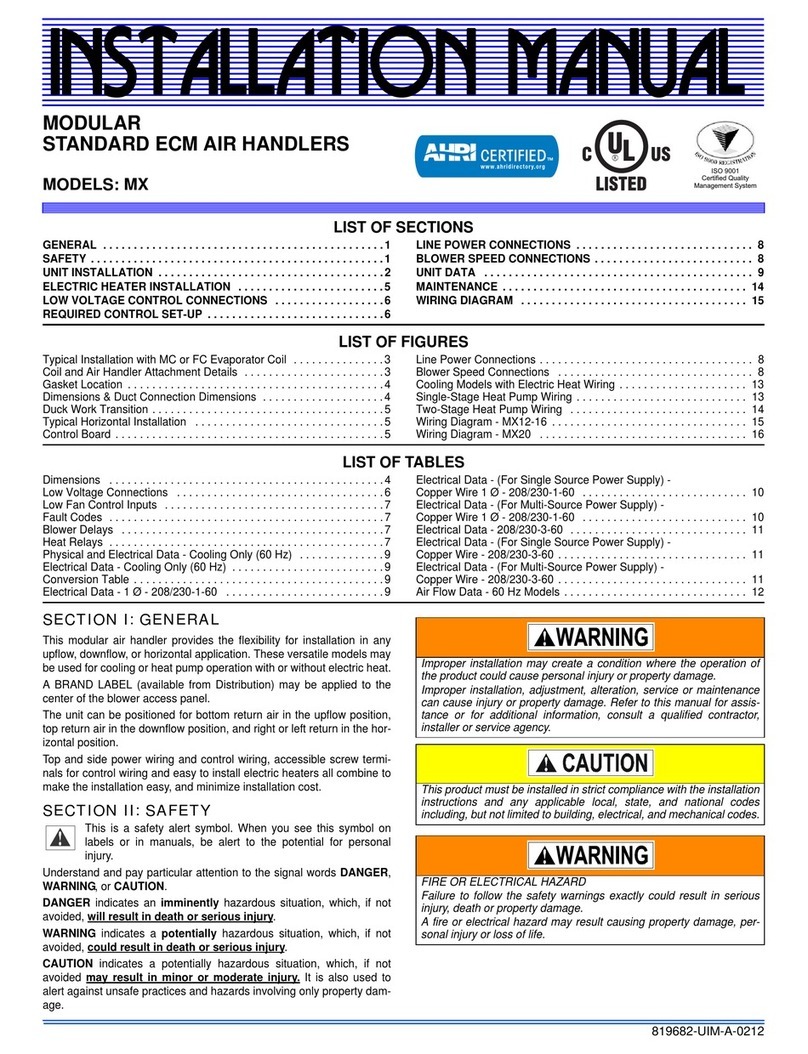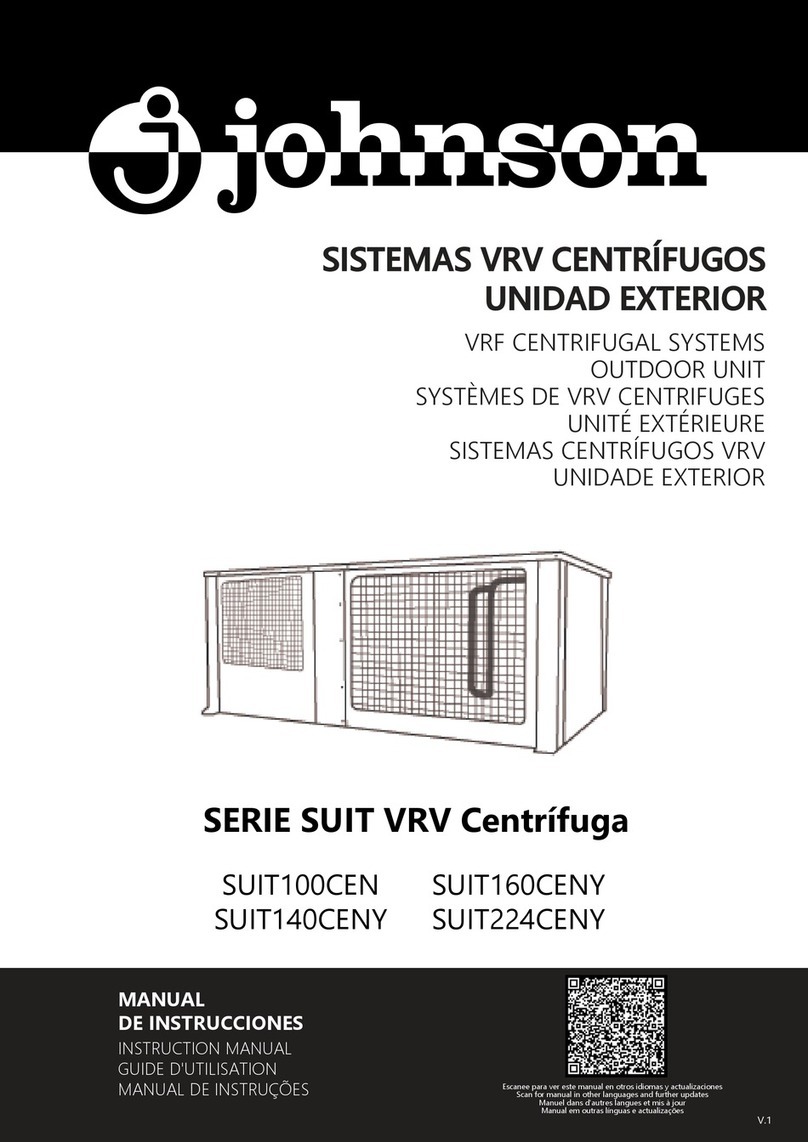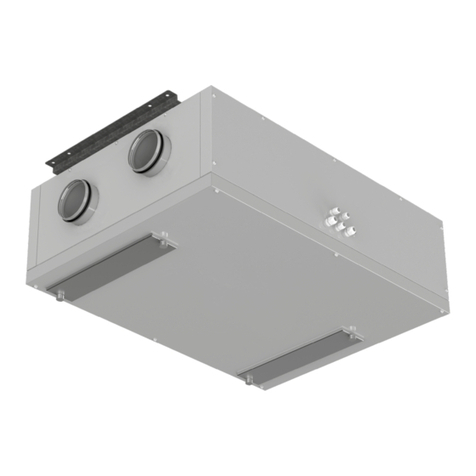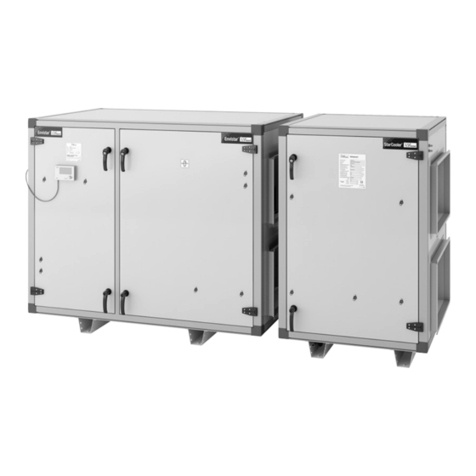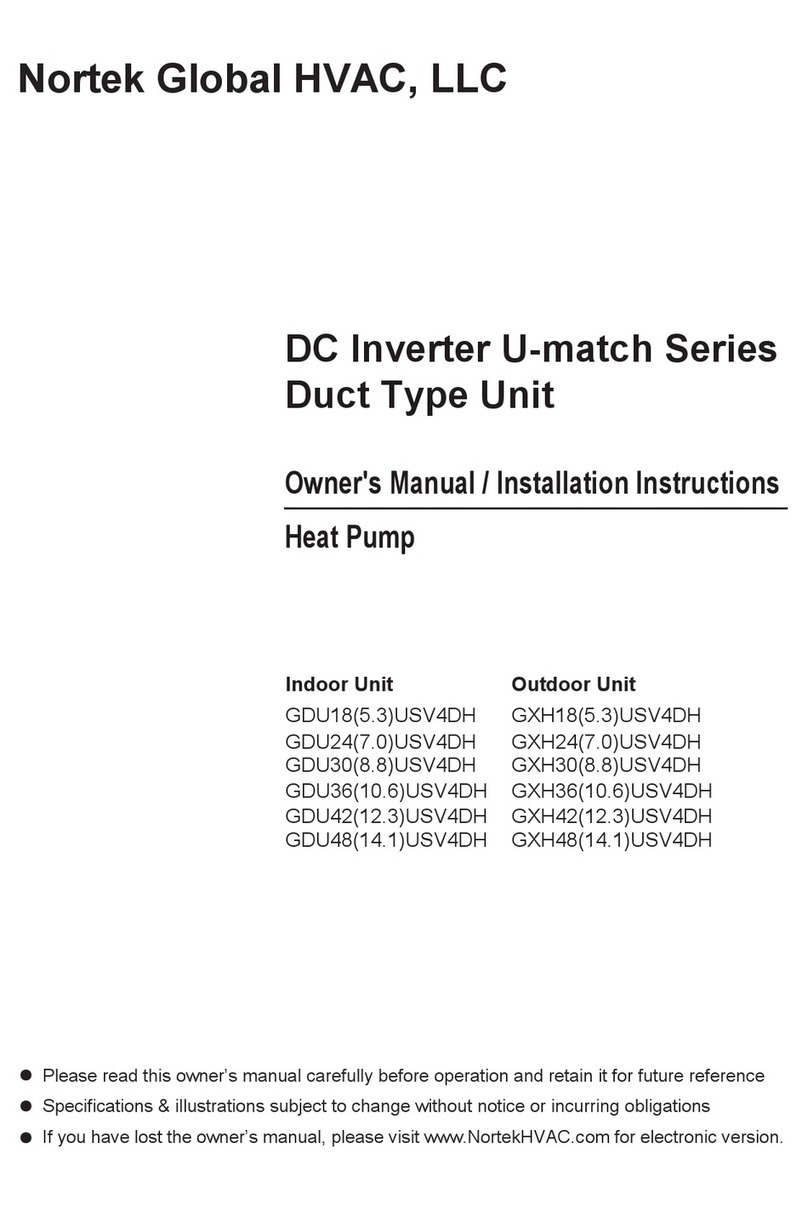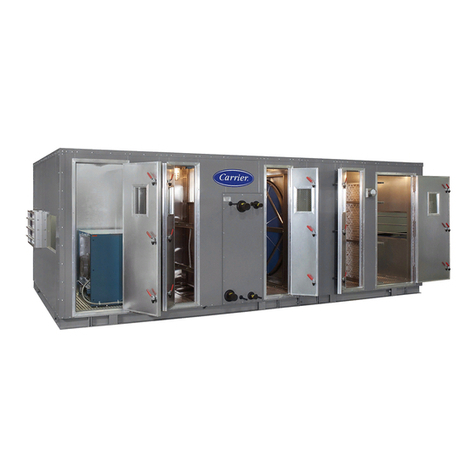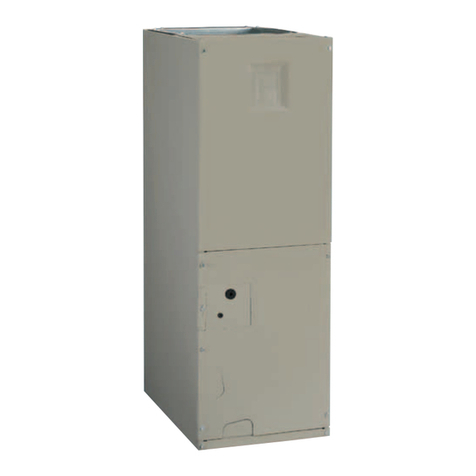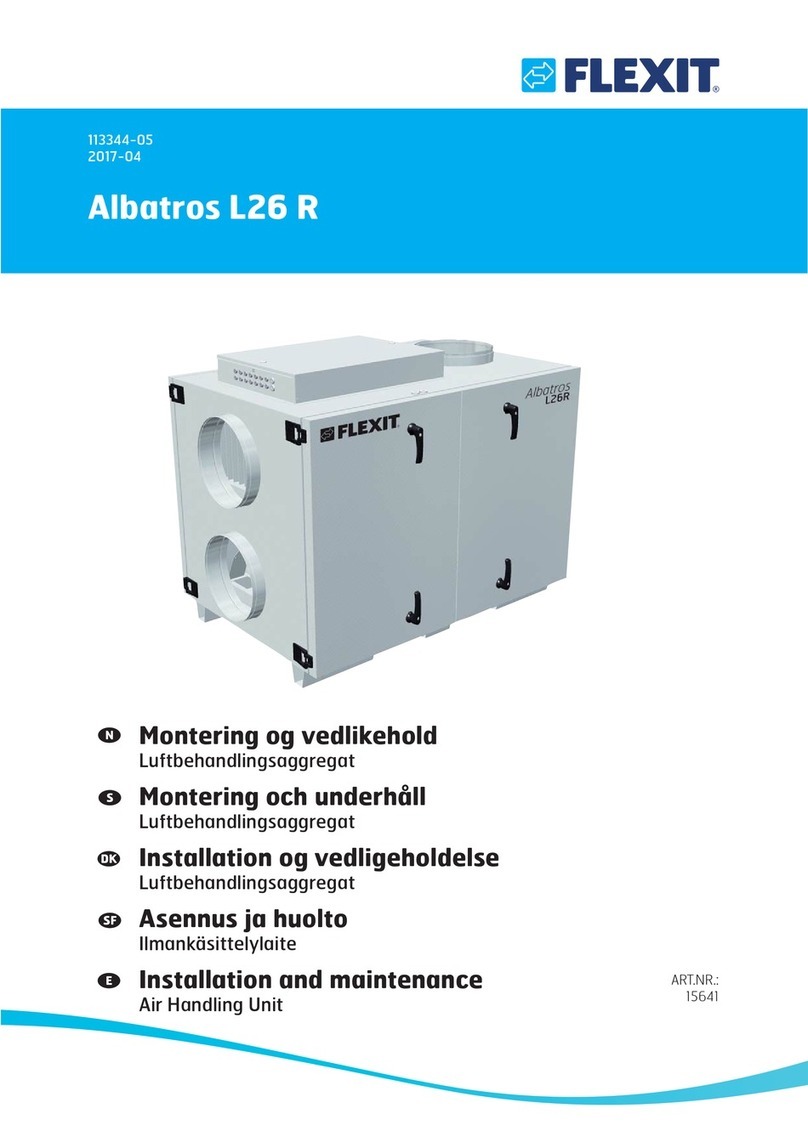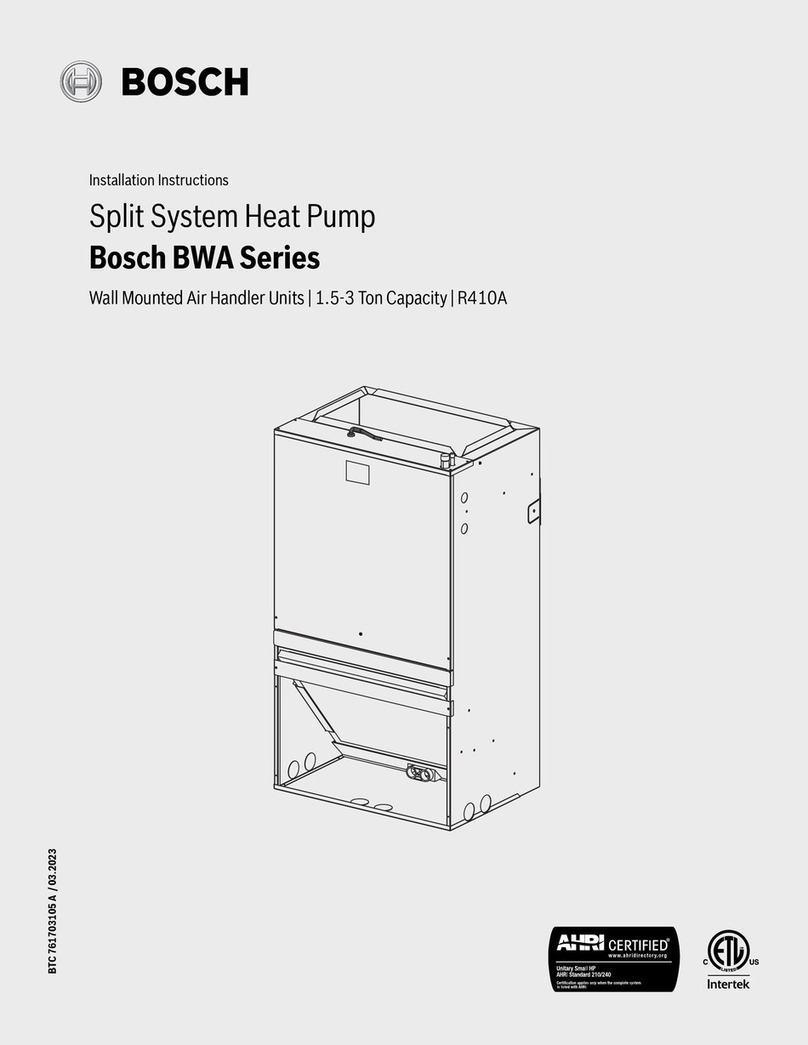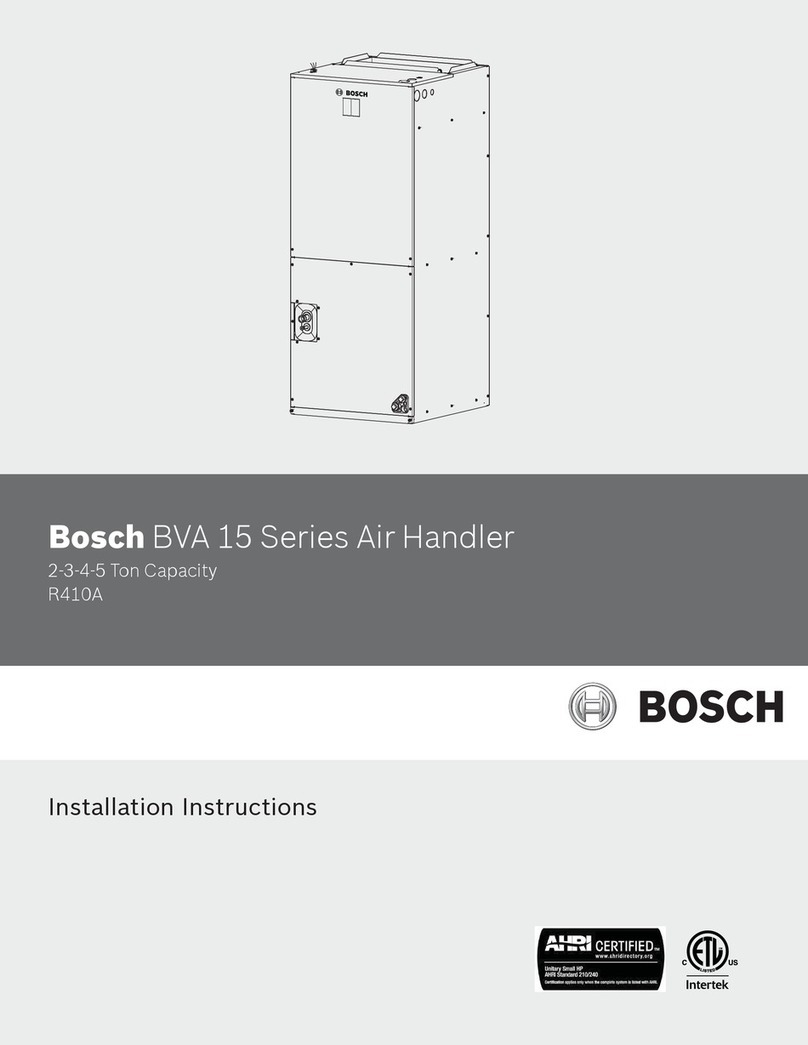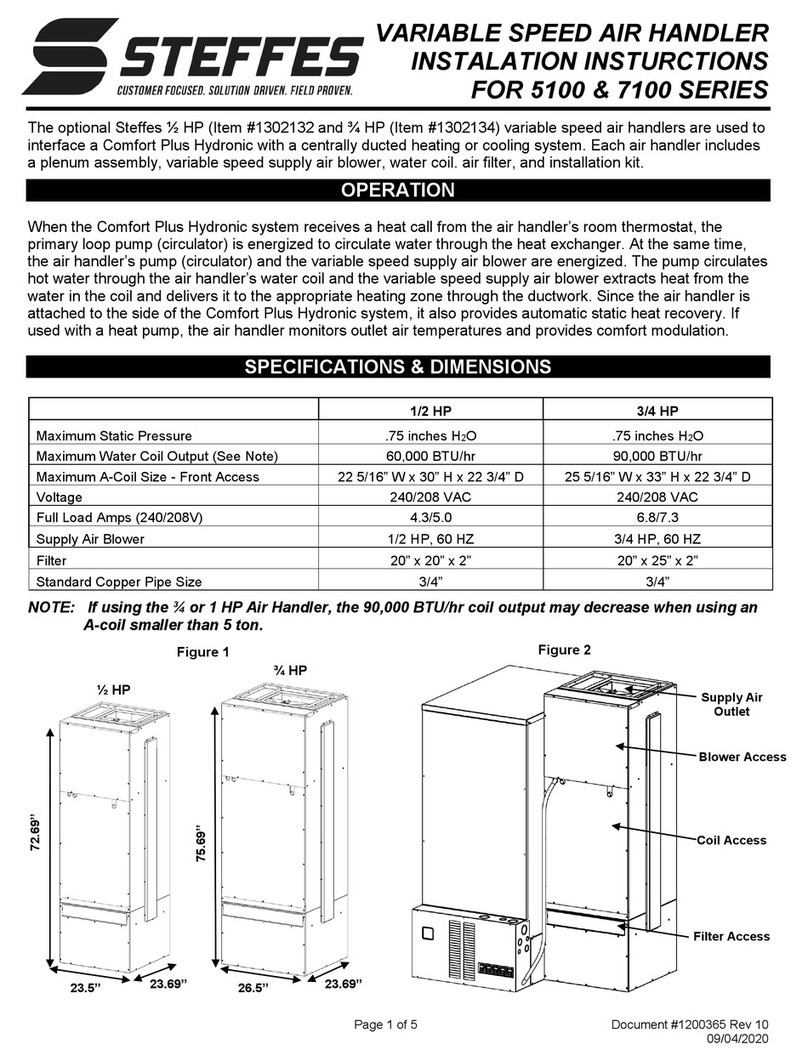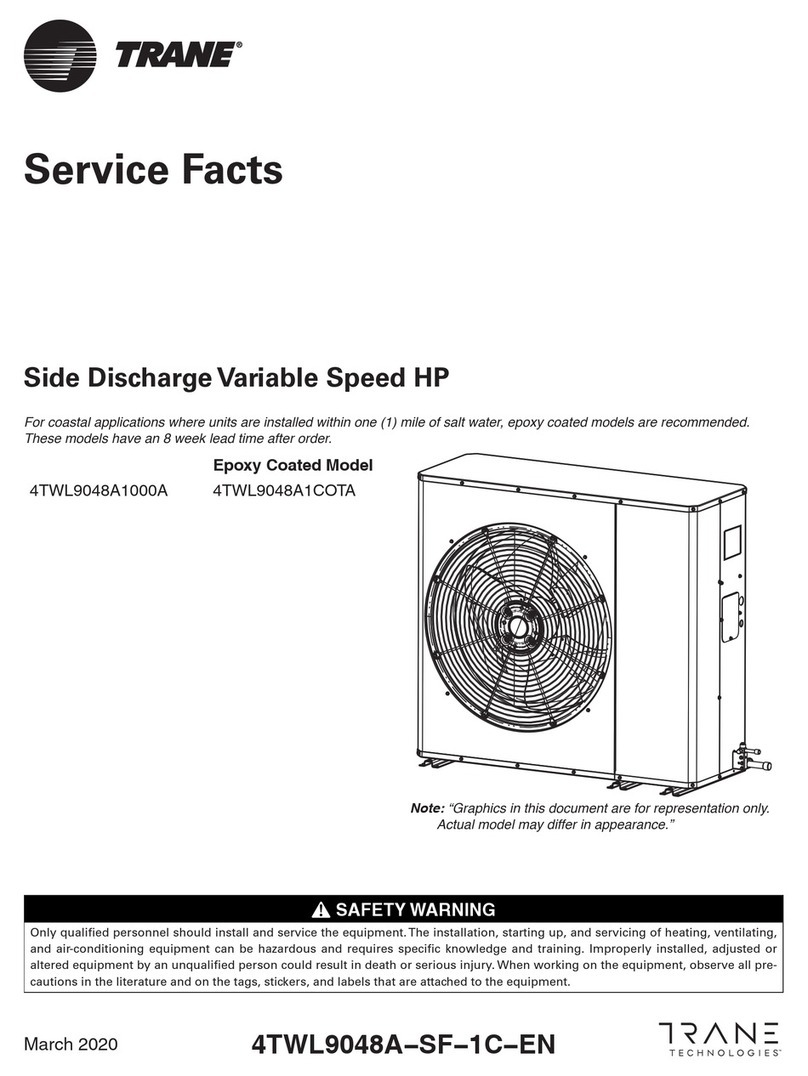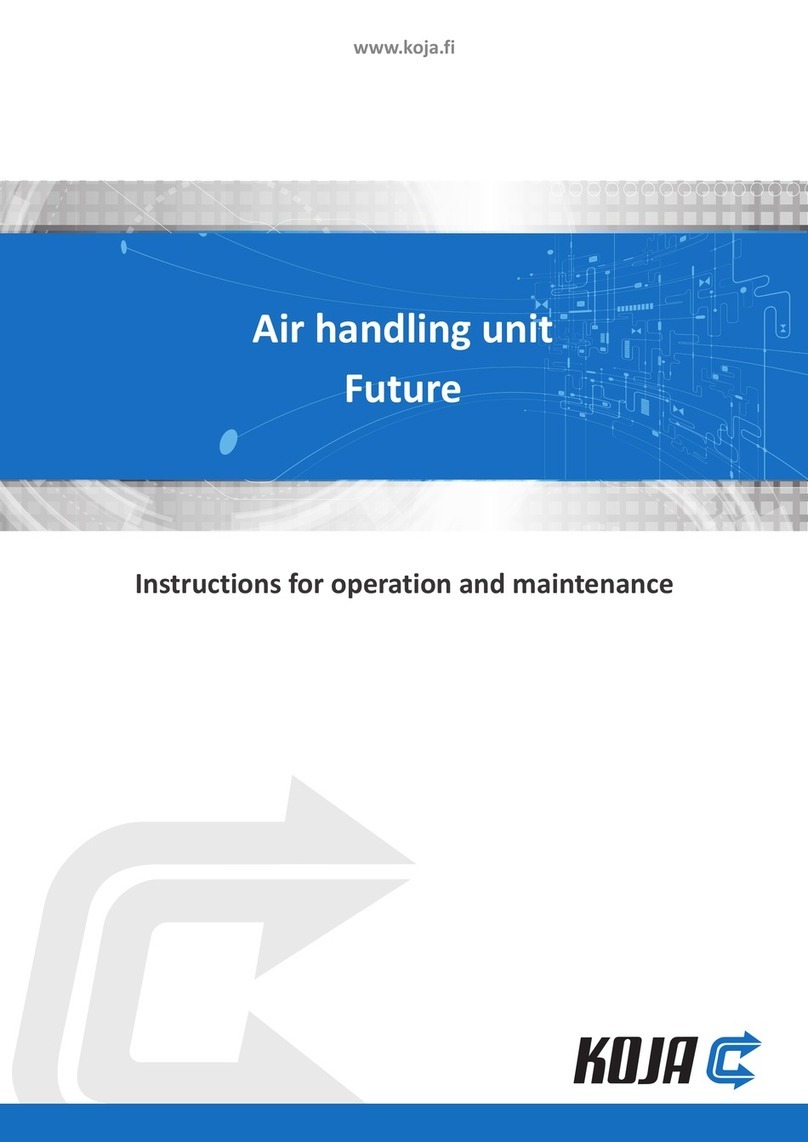
Refrigerant Lines | 15SM Split AH/AV Air Handler
8733826256 (2020/06)SM Split AH/AV Air Handler Subject to change without prior notice
select the proper program in the ECM motor for
the unit. Refer to Fig. 13 for the proper jumper
placement.
To the left of the red and green status LEDs is a
row of 1/4” male quick connects. (See Fig. 13.)
These are used to pass thermostat inputs on to the
rest of the control circuit. Remember to always
turn off unit power at the circuit breaker before
attaching or disconnecting any wiring from these
connections to avoid accidental short circuits that
can damage unit control components.
REFRIGERANT LINES
The installation of the copper refrigerant tubing
must be done with care to obtain reliable,
trouble-free operation. This installation should
only be performed by qualified refrigeration
service and installation personnel.
Refrigerant lines generally can and should be
routed and supported so as to prevent the
transmission of vibrations into the building
structure. Experience and good design practice
dictate 75 feet as the maximum practical length for
interconnecting refrigerant lines in split system
heat pumps without special considerations.
Beyond 75 feet, system losses become substantial
and the total refrigerant charge required can
compromise the reliability and design life of the
equipment.
Copper tubing should be clean and free of
moisture and dirt or debris. The suction and liquid
lines MUST be insulated with at least 3/8” wall,
closed-cell foam rubber insulation or the
equivalent.
Some points to consider are:
• Pressure drop (friction losses) in refrigerant
suction lines reduces system capacity and
increases power consumption by as much as
2% or more, depending on the line length,
number of bends, etc. Pressure drop in liquid
lines affects system performance to a lesser
degree, provided that a solid column of liquid
(no flash gas) is being delivered to the
refrigerant metering device, and that the liquid
pressure at the refrigerant metering device is
sufficient to produce the required refrigerant
flow.
• Oil is continually being circulated with the
refrigerant so, oil return to the compressor is
always a consideration in line sizing. Suction
lines on split system heat pumps are also hot
gas lines in the heating mode, but are treated
as suction lines for sizing purposes. If the
recommended suction lines sizes are used,
there should be no problem with oil return.
• Vertical lines should be kept to a minimum.
Vertical liquid lines will have a vertical liquid lift
in either heating or cooling, and the weight of
the liquid head is added to the friction loss to
arrive at the total line pressure drop.
• Wherever possible, the air handler should be
installed at a higher elevation than the
condensing section to aid with oil return to the
compressor.
Linear vs. Equivalent Line Length
Linear Line Length — is the actual measured length
of the line including bends. This is used to
calculate the additional refrigerant charge that
must be added to the system (See Table 8 and
Table 9 for charge information).
Equivalent Line Length — is the combination of the
actual length of all the straight runs and the
equivalent length of all bends valves and fittings in
a particular line. The equivalent length of a bend,
valve or fitting is equal to the length of a straight
tube of the same diameter having the same
pressure drop as the particular valve or fitting. The
ASHRAE Fundamentals Handbook provides tables
for determining the equivalent length of various
bends, valves and fittings.
NOTICE: Always disconnect power before
changing jumper positions on the interface
board and reset the unit afterward.




















